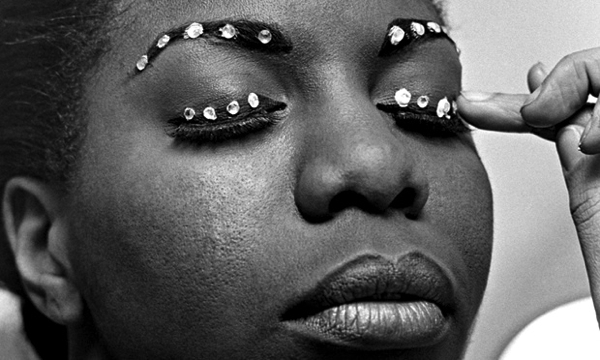Movie review by Greg Carlson
Filmmaker Liz Garbus, Oscar nominee and 2002 Fargo Film Festival special guest, considers the icon in “What Happened, Miss Simone?” — an often thrilling and sometimes exasperating portrait of the singular singer/songwriter/activist/piano prodigy. Executive-produced by Nina Simone’s only child, Lisa Simone Kelly, Garbus’ film accesses a wealth of personal correspondence, family photographs, and archival artifacts along with more familiar audio and visual documentation of Simone throughout her storied career. In several ways, Kelly’s complex and contentious relationship to her famous mother shapes the arc of the movie, which debuted at the Sundance Film Festival ahead of its availability on Netflix.
Even though Simone died in 2003 at the age of 70, protracted legal battles involving and often between Kelly and Andrew Stroud, Kelly’s father and Simone’s ex-husband and manager, raged beyond Stroud’s death in 2012. “What Happened, Miss Simone?” operates partially as a means of asserting control over the artist’s legacy, especially in light of the troubled and still unreleased biopic written and directed by Cynthia Mort and starring Zoe Saldana as Simone. Another nonfiction film titled “The Amazing Nina Simone,” like Mort’s “Nina,” is currently scheduled for a 2015 release.
Time will tell whether the other Simone movies will measure up to the power of their subject, but Garbus’ effort, by virtue of arriving first, intends to establish its preeminence. Passionate Simone disciples are likely to see in the movie the shortcomings of what Jordan Hoffman calls “Wikipedia-entry-as-cinema” highlights, and will be disappointed that any number of fascinating chapters in Simone’s biography — like her self-exile — are mentioned only in brief, and that others — such as Simone’s relationship with the first Prime Minister of Barbados Errol Barrow — aren’t included at all. Expectedly, the film highlights Simone’s prominent place during the 1960s Civil Rights Movement, a critical stage in her development as a musician and thinker.
Both Manohla Dargis and Tanya Steele have questioned the amount of onscreen time afforded to Simone’s onetime spouse Stroud, the former NYPD detective who raped and regularly beat Simone. Steele, apoplectic at Simone’s “abuser telling her story,” acknowledges the painful relationship between parent and child, writing, “Whereas, I understood her daughter’s recounting of the abuse that she experienced at the hands of her mother and I wanted to hear that, I felt that it was irresponsible to say that Nina Simone invited the abuse she received.” Additionally, Simone’s struggles with mental illness, while noted in the latter sections of the movie, remain a controversial, thorny and problematic component of her life, especially in terms of the temptation to link madness to creativity in the popular “tortured genius” narrative.
Fortunately, Garbus values the sonic authority of Simone’s music, and the best parts of the film share the sights and sounds of classics like “Mississippi Goddam,” “To Be Young, Gifted and Black,” and “I Wish I Knew How It Would Feel to Be Free.” The movie opens with Simone’s infamous, legendary appearance at the 1976 Montreux Jazz Festival. As indicated by the footage from that concert, in which Simone is testy, tempestuous, erratic, commanding, fierce, and heartbreaking, significantly more detailed discussions of both her live performances and her recordings are merited. Garbus intends to be comprehensive, however, treating the music as but one (albeit important) aspect of her story. The final report is a starting point for anyone curious about one of the most important figures in 20th century popular culture, although the episodic and chronological arrangement of the content sometimes feels safer and more staid than the innovative and unconventional habits of the High Priestess of Soul warrant.
